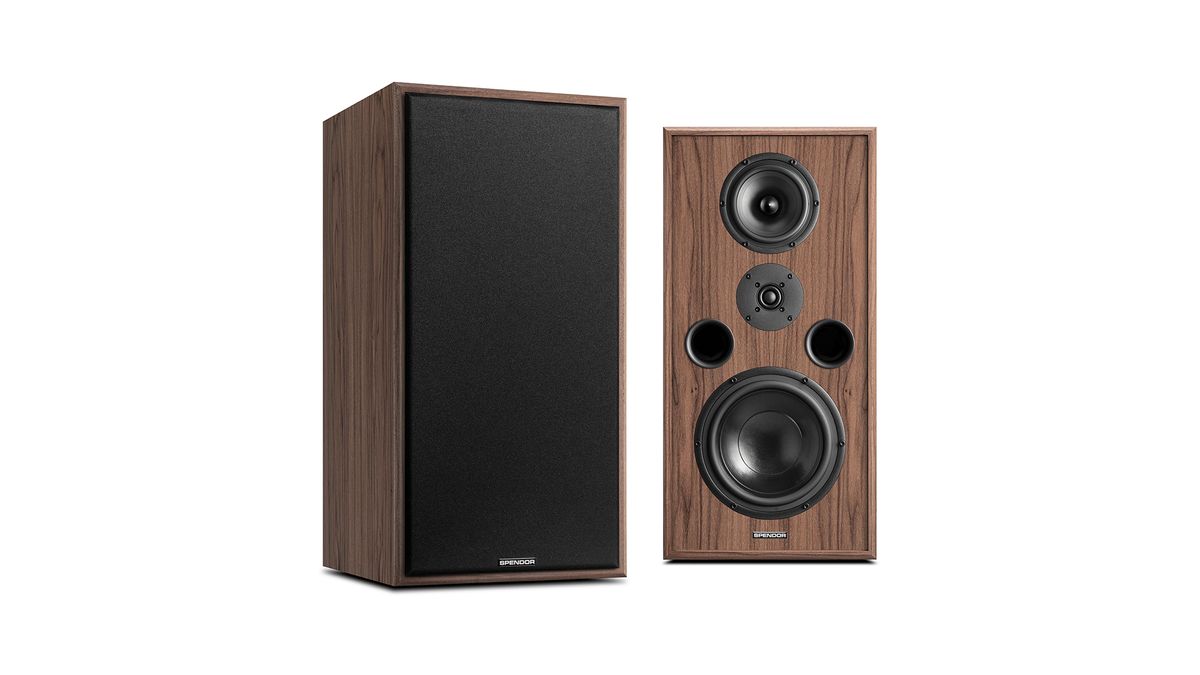What Hi-Fi? Verdict
The Classic 1/2s play on their retro-appeal, but also offer a blend of strengths that rivals struggle to match
Pros
- +
Unforced dynamics
- +
Easy-going character
- +
Impressive build and finish
Cons
- -
Dedicated stands are expensive
Why you can trust What Hi-Fi?
It’s easy to underestimate retro-themed speakers such as Spendor’s Classic 1/2s. They lean heavily on heritage and seem to have different priorities to similarly priced modern alternatives. Yet all it takes is an open mind and a careful listen to realise that the Classic 1/2s are different. They offer much more than just a nostalgia trip.
Their lineage can be traced back to Spendor’s first product, the legendary BC-1. Back in 1969, the BC-1s were considered revolutionary. They implemented the speaker design ideals developed by the BBC’s famed engineering department.
It was no surprise that Spendor’s designer and co-founder Spencer Hughes chose this route; he was part of the BBC’s research team and responsible for some of the findings.
The research’s conclusions prompted a move away from conventional paper pulp diaphragms to using Bextrene for better resonance control, and promoted a thin-walled, heavily damped cabinet construction.
The BC-1’s design was based on these ideas and built up an enviable reputation for naturalness and transparency. It had an unusual driver configuration, being three-way, but splitting the frequency range into mid/bass, low treble and high treble (above 13kHz).
It’s fair to think of the Classic 1/2s as the speakers the BC-1s would be if they were made using today’s technology. Importantly they stay faithful to those BBC ideals.
Build
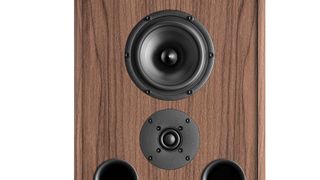
The Classic 1/2s are three-way speakers in a conventional sense with bass, midrange and tweeter units. These are all highly developed modern drivers, and all bar the tweeter are designed, engineered and made in-house, which is quite some feat for such a small manufacturer.
The drive units no longer use Bextrene though – things have moved on from there. The bass driver is new and has a 22cm polyamide fibre reinforced polymer cone held in a die-cast magnesium alloy chassis. It’s designed to remain low-distortion even when pushed hard. This is partnered with a 15cm midrange unit, which uses the company’s proven EP77 polymer cone material.
At the top-end is Spendor’s 22mm wide-surround soft dome tweeter. We’ve heard this unit before and it has always worked well. The three drive units are linked with a carefully calibrated tri-wire crossover network that aims for seamless integration and good phase alignment.
Tap the Classic 1/2’s cabinet and you’ll find the thin-walled construction is alive and well. The idea is that no matter how rigid you make a cabinet it will always resonant in some way. The stiffer it is, the higher its resonant frequency will be. Typically, it ends up somewhere in the midrange, where our ears are at their most sensitive.
If you make the cabinet walls thin, then that resonance frequency will move towards the lower frequencies where it’s less likely to be noticed. Add a hefty dose of damping to the panels and things should stay in control.
This approach is the opposite of what most of the industry does today, including Spendor with its other ranges. So, which way is right? We’ve heard great results from both techniques, so we’re not taking sides.
Compatibility
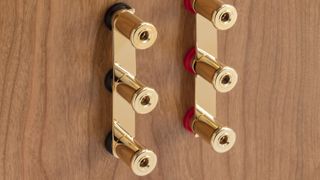
Spendor is rare among small speaker specialists in that it makes cabinets in-house – the craftsmanship on show here is impressive. The 1/2’s enclosure has crisp edges and is beautifully finished with a high-quality real wood veneer. There are two standard finishes, cherry and walnut.
The company also makes the dedicated stands. Their stainless steel and alloy design is a huge departure from the conventional chunky supports we usually see, and Spendor makes big claims for their rigidity and resonance behaviour. At £1500 ($2195/Au$2995), they’re a hefty investment, but given the Classic 1/2’s size, there aren’t many credible alternatives.
Speakers at this level demand a top-class system. We use Naim’s ND555/555 PS DR music streamer and the Technics SL-1000R turntable as sources, with Burmester’s 088/911 Mk 3 pre/power providing the music. We also slot in Nagra’s excellent Classic Preamp for a bit of fun.
These Spendors are big speakers, but it doesn’t mean that they need a massive room to work properly. You should be fine as long as you can place them around a metre out from the room boundaries. They’re not particularly fussy about angling towards the listening position either. We position them so that the tweeters cross around a metre behind us, and that works fine.
Sound
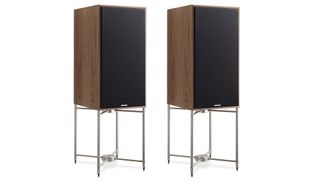
We expected loads of bass but didn’t expect it to be so agile and articulate. Listening to Massive Attack’s Angel is a treat. The Classics plumb the depths with ease, delivering notes with unexpected texture and subtlety. There’s a hefty dose of punch and an impressive degree of weight here, but it all sounds proportional and never dominates more than intended.
These speakers time pretty well too, conveying the momentum of the music with skill. This hasn’t always been a strength of Spendor’s Classic range, but recent models have marked a significant step forward in this respect. This aspect still isn’t done with quite the verve of Audiovector’s comparatively small, but similarly priced, R1 Arretés but isn’t as far away as we would have expected.
This is an aspect that Spendor has continually improved with each new generation of its Classic speakers and, in our experience, the current range is easily the best one yet. These speakers encourage you to do more than merely tap your toes, they want you to have a dance too (with appropriate music, of course!).
Those lovely Audiovectors have no chance of matching the Spendors when it comes to coping with high volume levels and absolute sonic authority, particularly in larger rooms. We push volume levels northwards and the 1/2s respond with class-leading composure and refinement. They never sound stressed and refuse to get aggressive, even when provoked with less than perfect recordings.
We love the way these speakers reproduce voices. They’re far less forward sounding than most rivals, but still manage to render vocals with uncommon clarity and grace. It’s a full-bodied, nicely-scaled presentation that can be truly convincing with good recordings.
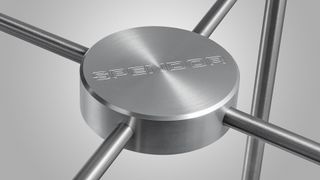
Switching to Holst’s Jupiter shows the Classic 1/2’s sonic authority. They sound massive and deliver the music’s crescendos with plenty of punch. Dynamics are tracked with ease and the speaker’s range is little short of breathtaking compared to smaller rivals.
Detail levels are high, with the Classics able to track multiple instrumental strands without issue. The presentation never sounds cluttered or messy thanks to class-leading organisation and a good sense of space around individual notes.
Tonally, there’s just a hint of the richness that’s so part of the DNA of Spendor’s Classic line-up, but it never gets out of hand to the extent where we feel more aggressive music is spoilt by the lack of edge.
Indeed, the slightly relaxed approach taken here is one that encourages long listening sessions deep into the night. Integration between the drive units is seamless, and that speaks well of the choice of drivers and the calibration of the crossover.
Stereo imaging is pretty good for such a big box. It’s stable, layered and precise, and thanks to the speaker’s composure, stays focused even when the music becomes demanding.
Verdict
These speakers may lack the overtly high-tech engineering of price rivals, but are none the worse for that. These are carefully considered boxes that deliver a thoroughly modern performance without losing the retro-charm that so defines Spendor’s Classic range. If you’re auditioning speakers at this level, make sure you have the Classic 1/2s on your shortlist.
SCORES
- Sound 5
- Compatibility 4
- Build 5
MORE:
Read our Audiovector R1 Arreté review
What Hi-Fi?, founded in 1976, is the world's leading independent guide to buying and owning hi-fi and home entertainment products. Our comprehensive tests help you buy the very best for your money, with our advice sections giving you step-by-step information on how to get even more from your music and movies. Everything is tested by our dedicated team of in-house reviewers in our custom-built test rooms in London, Reading and Bath. Our coveted five-star rating and Awards are recognised all over the world as the ultimate seal of approval, so you can buy with absolute confidence.
-
Surly Sid Another British product, another 5 star review from What HIFI. Yawn...Reply
These things are overpriced. -
Friesiansam Reply
I see this sort of comment a lot on car magazine websites. Why shouldn't a British product be good enough for 5 stars? As for the stands though, ₤1500 is taking the pee.Surly Sid said:Another British product, another 5 star review from What HIFI. Yawn... -
PWani Are there any products that aren't amazing being made? Or is it just the amazing products being reviewed?Reply -
Romulus WHF reviews are not as bad as HiFi World reviews where every product review is 'outstanding' which really makes reading boring; its just a pity WHF ignore certain products (such as Hegel..?) for unlogical reasons...?Reply
